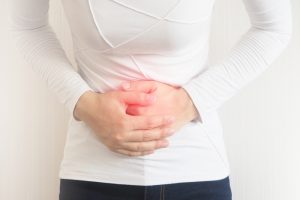Insights into how uterine tumors develop could offer hope to millions of women struggling with painful fibroids. Almost 8 out of 10 women develop fibroids. These are benign tumors that arise in the uterus during childbearing years. They can be extremely uncomfortable, cause heavy bleeding, and lead to infertility. Up to 80 percent of all women can develop a fibroid during their lifetime.
New Treatment to Inhibit the Growth of Fibroids

Researchers at the University of Cincinnati found that fibroid cells use different signaling pathways than uterine cells. This is particularly important for identifying therapeutic targets to attack tumors without affecting the surrounding tissue. The study was published in the journal F&S Science. According to the National Institutes of Health, treating fibroids is often invasive and expensive, and can sometimes lead to infertility. One in nine women will have a hysterectomy in their lifetime. And a third to half of those are due to uterine fibroids. Even though fibroids are not considered life-threatening, they can cause enormous pain. Contractions push the tumors into the muscle tissue. A quarter of all affected women experience excessive and uncontrolled uterine bleeding, anemia, miscarriages and fertility problems. In severe cases, abdominal tumors develop, requiring complicated surgery.
During each menstrual cycle, the body releases estrogen and progesterone, causing the uterine lining tissue to thicken in anticipation of a possible pregnancy. These hormones also promote the growth of fibroids. According to the researchers, cells can also respond to physical stress – like a defense mechanism to protect the cells. UC researchers grew fibroid cells and uterine cells on elastic-bottomed plates. They then subjected the cells to mechanical stress using a device to mimic the environment that fibroids face in the uterus. They found that myoma cells are more sensitive to stress. They were also able to identify differences in the way the cells maintained their shape. According to the researchers, these results underscore the importance of including not only hormones, but also mechanical stresses when studying fibroid cells. This will allow the pathology of these cells to be better understood, and experts could eventually work to target abnormal signaling pathways in fibroid cells.
Common noninvasive treatments target hormones responsible for fibroid growth. Researchers are looking for non-hormonal treatments for fibroids to preserve fertility in women who still want to become pregnant. Once researchers understand cellular pathology, they can study fibroids using 3D simulations and models. This could help them better understand how fibroids develop and how best to treat them. The next step will be to create more complex tissue models to mimic tumor growth in order to find ways to inhibit it.
What Causes Fibroids?
In addition to genetic predisposition, factors such as obesity, diabetes and high blood pressure can play a role in the development of urtic fibroids. But industrial chemicals also pose a risk. Northwestern Medicine scientists have demonstrated a causal link between environmental phthalates (toxic chemicals found in everyday consumer products) and the increased growth of uterine fibroids. Manufacturers use phthalates in numerous industrial and consumer goods (hair and make-up products), and they have also been detected in medical supplies and food (especially in packaging). Although they are known to be harmful, they are used in many countries. These are more than just environmental pollutants. These substances can specifically damage human tissue.
The study found that women with high exposure to certain phthalates such as DEHP (used as a plasticizer to increase the durability of products such as shower curtains, car upholstery, lunch boxes, shoes and more) and its metabolites were at high risk of developing fibroids to get sick. Previous epidemiological studies have consistently suggested a link between phthalate exposure and uterine fibroid growth, but this study explains the mechanisms behind this link. The scientists found that exposure to DEHP can activate a hormonal pathway that activates an environmentally responsive receptor (AHR) that binds to DNA, causing increased growth of fibroids.
DEHP is the most commonly used phthalate. Although public concern is increasing and it is banned in European Union countries, it is still widely used in the United States and other countries for packaging food and health products. In Europe, some plasticizers from the phthalate group have already been banned by the European Commission because they are considered toxic. DEHP can gradually be released from consumer products in indoor environments such as homes, schools, daycare centers, offices and cars. It settles on floors and other surfaces and can accumulate in dust and air. DEHP can be passed from mother to child during pregnancy.





